Can I power a 50-amp RV from an F-150 PowerBoost truck?
Turns out you can power a lot from a 7.2 kW inverter generator….
Dear Readers,
It looks like a number of readers have bought a Ford F-150 PowerBoost hybrid pickup truck with the optional built-in 7.2kW inverter generator. As many of you know, I had a loaner PowerBoost for two weeks last July.
So in addition to some basic towing tests with a Rockwood GeoPro toy hauler, I did a number of tests to see exactly how its built-in 7.2kW, 120/240-volt generator actually works under real-world conditions.
What have I learned so far?
Ford’s documentation and dealer training about the PowerBoost generator is pretty limited. So I ran my own experiments in the back lot of my FunkWorks Lab. Now, this wasn’t a fully documented test of all possible powering situations—which could takes weeks on its own. And I needed to make test drives from Maryland to Goshen, IN, and Maryland to Nashville, TN, and back, so there was limited generator testing. But I know the basics of how it works and what it can power in an RV.
Just the basics
The F-150 PowerBoost truck has a ProPower 7.2kW generator option that includes a pair of 20-amp, 120-volt duplex outlets as well as a twist-lock 30-amp, 120/240-volt outlet in the bed. There’s also a courtesy 20-amp, 120-volt outlet on the dashboard—which is really handy for powering your laptop computer or whatever.
There is a 1.5kWh battery under the back seat which shares duties providing electricity to the 35kW traction motor when you’re driving around town with the gasoline engine shut off, as well as powering the 7.2kW inverter generator automatically.
Note that this is a Hybrid version of the F-150, so its main power plant is a 3.5L twin-turbo V6 engine. I haven’t been able to get a loaner F-150 Lightning for testing, which is the all-electric version of the truck. So it doesn’t include a Bi-Directional charger like the Lightning does.
However, I believe that the Hybrid PowerBoost truck is a great interim solution for towing and powering small- to medium-size RV trailers until the USA charging infrastructure catches up in a few years.
What do I need to plug an RV into the ProPower 7.2kW generator?
It’s really very simple. You just use the twist-lock 30-amp receptacle in the bed of the PowerBoost truck, just like any other 7,000-watt generator. It does indeed make 120/240-volts with a bonded neutral, so you just need an off-the-shelf 4-prong dogbone adapter.
There’s a selection on the main video screen of the PowerBoost truck that allows you to turn on the generator, monitor the power, and reset the built-in GFCI protection. That’s the only real caveat with the ProPower generator, as the GFCI can interfere with using this truck to provide emergency power to your house. But I may have a workaround later.
Powering your 50-amp RV from a PowerBoost truck
Just buy a quality dogbone adapter with 4 prongs on the generator side for a standard 7,000-watt split-phase generator. Make sure you get one with the female outlet side having a standard NEMA 14-50 receptacle—just like a campground 50-amp pedestal. So, plug the dogbone adapter into the twist-lock outlet in the bed of the truck, and plug your 50-amp shore power cord for your RV into the 50-amp outlet on the dogbone adapter.
That’s exactly what I did for the Airstream Rally in Lebanon, TN, last July. Interestingly, a few of the bystanders told me I was going to fry the Airstream by plugging into the 240-volt outlet, and suggested that I “talk to the NoShockZone guy about this.” 😆 But, hey… I AM the NoShockZone guy and I had already tested this outlet for proper voltages. So it worked perfectly.
Powering two 30-amp RVs from a PowerBoost Truck
That’s equally simple once you get the proper dog-bone adapter. In this situation you just need to add a NEMA 4-15 male to double 30-amp TT adapter. So you first plug in a twist-lock 30-amp generator to RV 50-amp adapter, and then plug the 50-amp male to double 30-amp outlets to that. I haven’t found a single dogbone solution yet, but there’s probably one out there.
Now you can plug in one or two RVs to your PowerBoost truck, and it will easily power both trailers for several days on a single tank of gasoline. I tried this in my own backyard and it worked perfectly for an entire day.
Why does this work?
The twist-lock receptacle in the bed of the F-150 is a standard 120/240-volt Split-Phase outlet just like a 50-amp pedestal is supposed to be wired. Note that it does have 2 poles with 120 volts each, and when wired properly it can provide either 120 volts (1-pole) or 240 volts (2-pole).
This is exactly how your own residential wiring works, since a house will have a mix of 240-volt appliances like an electric water heater and oven, as well as dozens of 120-volt receptacles in your rooms.
RVs are a little different in that they generally don’t use 240-volt appliances, so everything in your RV uses a 1-pole, 120-volt connection. But because you have two separate poles in a 50-amp outlet, you actually can use 50+50 amps at 120 volts. So that’s really 100 amps at 120 volts of available current. Learn more on that by clicking HERE.
Webcast Thursday 7pm EST
Learn more about the 7.2kW inverter generator in the 2025 RAM 1500 Ramcharger during my Live Webcast with Tony Barthel this Thursday at 7pm. See below…
Tony Barthel from Stressless Camping and I will discuss the RV towing and boondocking possibilities of the 2025 Ramcharger 1500. You’ll be able to text your questions to us in real-time and we’ll do our best to answer them on-air.
Watch this 1 minute video with more info on the webcast by clicking on the picture above, or sign up for the webcast directly for an email reminder by clicking HERE.
Let’s play safe out there… Mike



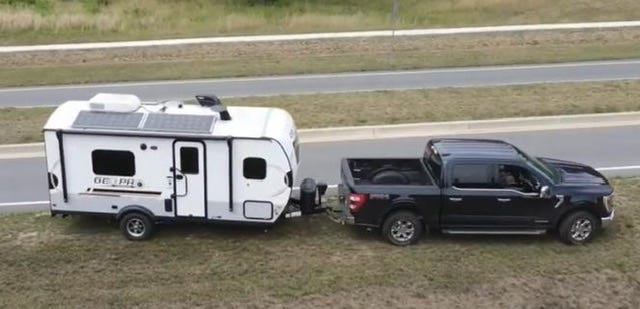
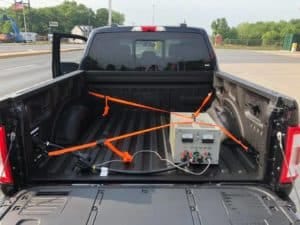
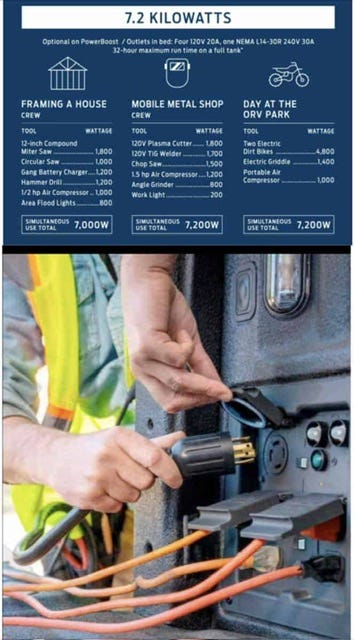
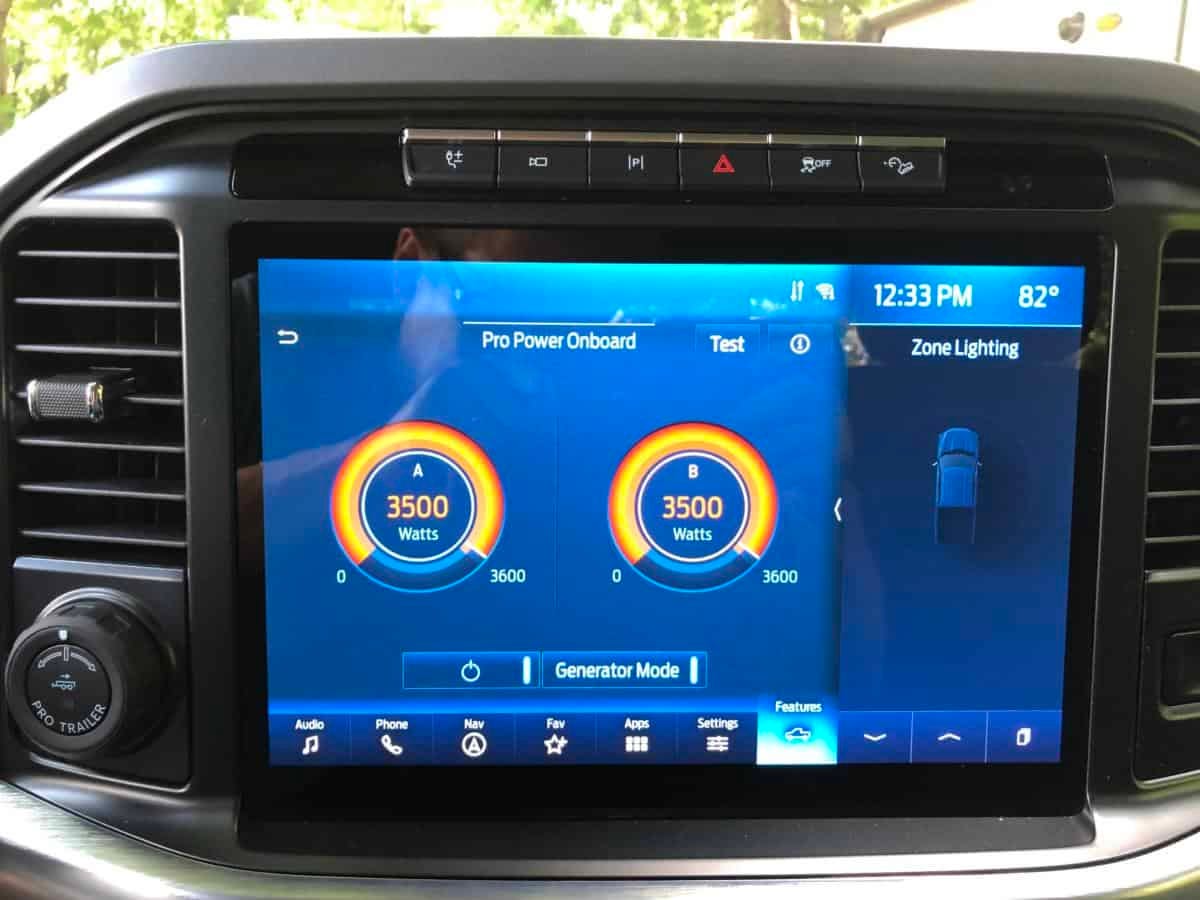
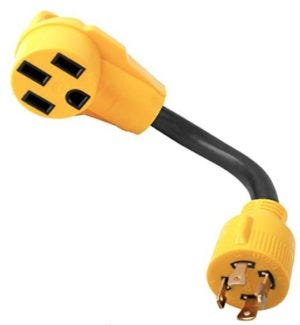

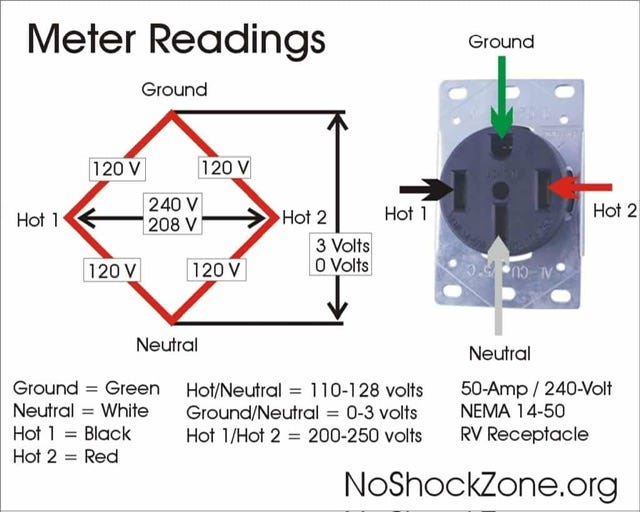


Interesting article thanks! I think all the Ford salesmen should be required to read your info on their truck. You should strike a deal with Ford in Detroit to publish a paper for distribution to their dealerships.
Interesting article, thanks Mike. I have several questions. First, you mentioned that the F-150 hybrid has a bonded neutral and that you had a workaround for using it to power a house but I couldn’t find it in the article (did I miss it?). You mentioned the GFCI being a problem but isn’t the ground to neutral bond a problem too since in a home, there should only be one G-N bond at the main panel? Second, I camped with a friend who had one of these puppies and I couldn’t resist trying to power my RV with it and using it to charge up my battery after three days of boondocking. He mentioned it had a battery for powering the gene so the engine didn’t need to run constantly but I assumed it was the hybrid propulsion battery. You said it had a 1.5kW-hr battery. That sounded kinda small to me but I looked it up and yes, that’s what they say but it apparently operates at 450V which would keep the current to a reasonable level. Do you know if this 1.5 kW-hr battery is just for the gene or is this also the propulsion motor battery? When powering his or my trailer, the engine would automatically start-up every so often to charge the battery but I didn’t think to time it. If the gene were to output 7.2 kW, then it would consume 1.5 kW-hr every 1.5/7.2 hrs or every 12.5 minutes. Assuming 80% or so efficiency, the engine would need to turn on every 10 minutes but that would cycle the battery from 100% to 0%. I guess this seems possible but I wonder what you think or know about this?